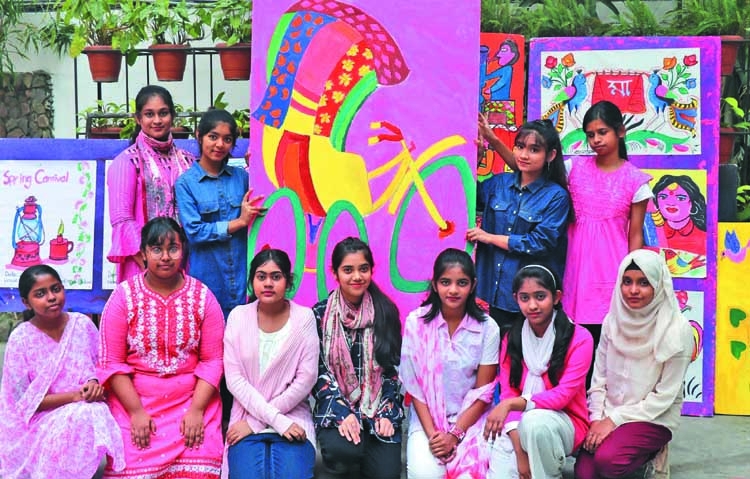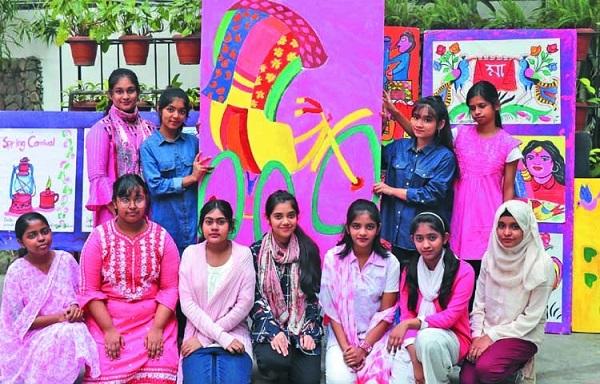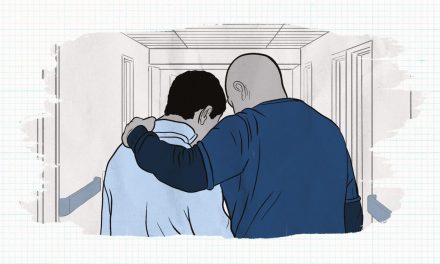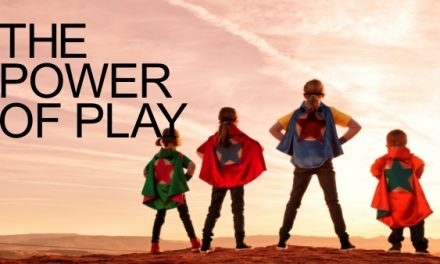
Every time parents observe different problems around them, they resort to saying one common statement to their child- the key to life is not only good education but to become a good human being. However, they fail to act upon their words. In order to grow up to be good human beings, children have to go through a few necessary steps in life. But do parents actually provide these requirements for their development?
Children require the following for proper mental growth- play time, knowledge about their culture, story books to read, a happy and friendly relationship with friends and family. Unfortunately, we are failing to provide any of these properly. Children do not have playgrounds to play in and barely have time to venture into the world of storybooks. We see families sitting together in the living room but each of them lives in their own virtual world through their mobile phones.
If there is no communication between family members, how will they strengthen their bond? Children also have free access to the internet without any supervision which becomes a pathway for them to be victims of cybercrimes. If we do not address these issues and work to solve them, children will not be able to grow up to become the kind of human beings we hope them to be.
It is the duty of parents, teachers and the society to work on solutions to overcome the growing problems. We do not necessarily have to go out of our way to provide these basic necessities. Schools can easily incorporate these into the curriculum and help students take part in active learning. If schools do not take the initiative to help children acquire the requirements, they may never get a chance to shine the brightest.
Let us discuss a method to provide cultural learning without deviating from the school curriculum. Institutions tend to organize different events every year on the Bengali New year, International Mother Language Day, Spring festivals etc. Including certain themes in these programs may help enrich the students’ knowledge through taking part in these functions. It is both a fun and efficient way of teaching them about their culture. For instance, our school arranged a spring carnival this year with a few messages for the students, teachers and parents as well. The color code of the event was pink and everyone was instructed to adorn themselves in all hues of the color.
Why pink you ask? The color pink has always been associated with women and femininity. Many students, when given the color code, showed distaste towards it and refused to accept it. This is exactly the kind of mindset we wish to reform. With this choice of color we intended to teach the students about gender equality. A lot of people do not know this but pink was not always considered a girly color.
Back in the 19th century, shades of red and pink were known to be masculine while blue was feminine. Pink was assumed to define strength;thus, men were associated with the color. Since blue was linked to vibrance and glamour it seemed like a better fit for women. However, since the First World War, colors were assigned based on genders. That is when the colors changed parties.
The color pink represents love, affection and hope. Thus, in 2008, pink was used to represent women empowerment and “Breast Cancer Awareness” month. It became a symbol for all the women suffering from breast cancer. Their aim was to raise awareness by making people of all genders wear pink to support the cause. So, this year, we wanted to break gender barriers with our choice of color and promote gender equality and raise awareness for the people suffering from breast cancer all over the world.
Other than pink, we chose Patachitra and Rickshaw Chitra to bring about cultural learning.
Children these days are unaware of this 2000-year-old heritage of ours. We thought it was about time our students learned about this so we incorporated it in this year’s carnival. .Patachitra is made on cloth, thus the name. During the 18th century, patachitra art consisted of stories about Gaji, Kalu and Champabati. The thrilling adventures of Gazi pir were illustrated magnificently in these patachitra.
Thus these forms of art were recognized as ‘Gaji’s Patachitra’. We made our students get into this art and they created their own versions which were displayed as decoration. This form of learning is more encouraging than others as students actually show interest in what they learn and engage in different activities to exhibit their knowledge.
Rickshaw chitra, similarly, represents our culture as rickshaws have been one of our oldest forms of transport. Rickshaws make our daily travels somewhat easier and a huge portion of our lower working-class population use rickshaw pulling as their only source of income. Rickshaw chitra has also become popular over time as many people get to venture their creative side and make a living through this job. During the 1950’s rickshaw art used to consist of pictures of flowers, birds and various actors and actresses. However, the art did not really gain mainstream popularity at the time.
Later, pictures depicting the country’s independence, liberation war and nature started to appear. These artists are often neglected and do not get much appreciation for their creativity and skill. Zainul Abedin and S.M Sultan have taken our country’s art to great heights. But our rickshaw artists are in no way behind them. Our children must recognize their talent and hard work as they contribute greatly to the life and culture of our country.
By incorporating all these topics into our events, we aim to help our children by taking them one step closer to becoming good human beings. Other than knowledge, students also learn other qualities that they need to excel in life like leadership skills and to work as a team. When the students work together for the event, they get to understand the importance of teamwork.
Working together is not easy. It requires making sacrifices, taking everyone’s opinions into account, being respectful and open minded. When they see the way, their teachers initiate and conduct everything, they tend to take notes of the leadership qualities of their mentors. It is very important for children to acquire leadership and teamwork skills from a young age as they will need it when they work as adults- be it as the owner of a firm or any office job. They must know how to manage people and work accordingly. In order to instill these ideas, teachers must create learning minds.
Only then, children will be keen to take in the teachings and apply them in their lives. Students require motivation and inspiration and teachers must do exactly that. They must know that their students are their top priority. If the teachers are responsible enough to do their part properly, students automatically move towards a path of change and learn to be good human beings.
We do not know how much our school is succeeding in achieving our dreams of molding our future generations into responsible and kind human beings, but we are trying. This was our part in introducing our students to the culture and heritage of our country. Siddiqui’s international school, in partnership with MD. Khaled Khan atQatar University, is working on Cyber security which highlights the inclination of students towards the virtual world and its pros and cons. This will be discussed in our next segment along with the other necessary steps for the mental development of our children.





